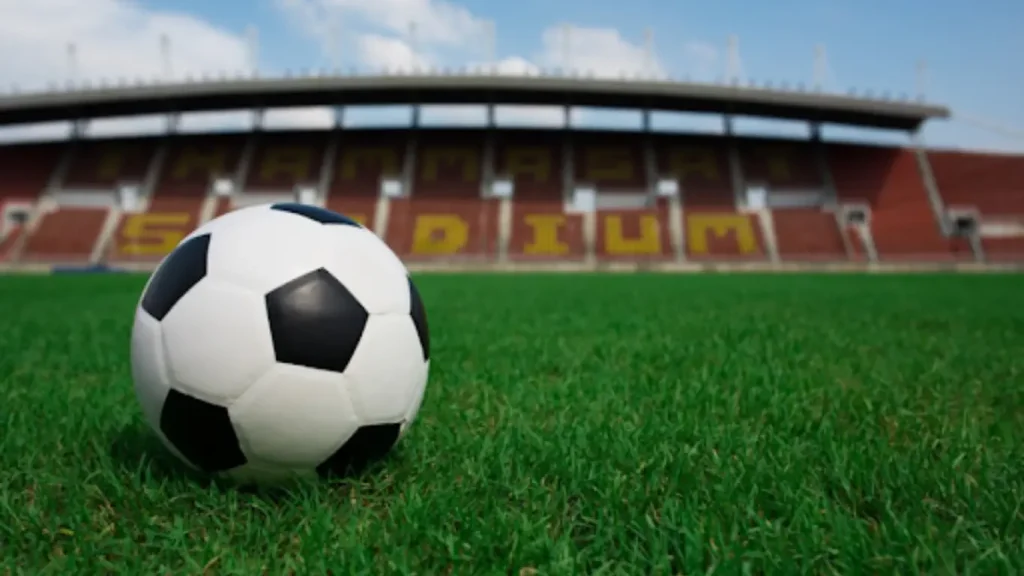Playing football is not only thrilling but also demands careful attention to safety. As players step onto the field, they must prioritize their well-being while embracing the spirit of competition.
If you want a safe and enjoyable experience, here are seven critical safety tips that every football player should adhere to.
These guidelines will help prevent injuries and promote a culture of safety on and off the field.
1. Wear Proper Protective Gear
The first and foremost tip to ensure your safety is to always wear the appropriate protective gear during practice and games. You must have various must-wear protective gear, such as…
- A properly fitted helmet protects your head from injuries.
- Shoulder pads that offer robust protection
- Use appropriate Gloves that give a better grip to catch the ball before the goal.
- Knee pads to guard against impacts and abrasions
- A mouthguard to protect your teeth and jaw
- A back plate that offers back protection and so on…
Each piece of gear should be inspected regularly for signs of wear and damage, as faulty equipment can significantly increase the risk of injury. Develop a habit of checking the best fit and condition of your gear before each session.
2. Warm-Up and Stretch
Another must-do is to dedicate at least 10-15 minutes to warming up before playing football. Start with light cardio exercises, such as jogging or jumping jacks. These will increase your heart rate and blood flow to your muscles.
Combine cardio exercises with dynamic stretching. While stretching, focus on the major muscle groups you’ll be using, such as legs, arms, and torso.
Additionally, if you incorporate exercises like leg swings, arm circles, and truck rotations, they can improve your flexibility and mobility. Hence, you will notice a reduced risk of strains and injuries.
3. Stay Hydrated
Every football player must be well-hydrated at all times for optimal performance and health. Make it a habit to consume fluids regularly throughout the day, not just during practice or games. Before you start any exercise, drink water or a sports drink containing electrolytes.
During football sessions, aim to hydrate every 15-20 minutes. After activity, it’s essential to replenish lost fluids. You can monitor the color of your urine to determine your body’s hydration level. Be sure that light yellow-coloured urine usually indicates proper hydration.
4. Understand the Rules
Next, you need to understand the game’s rules. This step is crucial to enhance your gameplay and your safety on the field. Spend some time studying the rulebook and engaging in meetings or discussions with coaches and teammates. You will gain expert advice and guidance from the field specialists.
Gaining in-depth insights will help you anticipate potential hazards, such as slippery or uneven playing surfaces, figure out unsafe playing conditions and prevent unneeded penalties. As a football player, if you respect the rules, it will promote a safer environment for you and everyone involved.
5. Communicate with Your Teammates
Effective communication is crucial for preventing collisions and improving teamwork on the football field. Prioritize announcing plays more clearly, and maintain vocal contact with your teammates throughout the football game.
Be sure to establish preferred signals and cues for different scenarios. This will ensure everyone is well aware of their roles. If you engage in proactive communication, it will reduce confusion and help create a cohesive unit. Thus, you will feel more empowered to handle the fast-paced nature of modern football.
6. Practice Safe Tackling Techniques
Now is the time to learn and apply proper tackling techniques consistently. This will ensure your and your opponents’ safety and protection. All you need to do is focus on how you can keep your head up during tackles. So you can maintain awareness of your surroundings.
Instead of using your helmet, always use your shoulder to initiate communication with other players during the football session. This approach reduces the chances of head and neck injuries, giving you a more fulfilling football-playing experience.
What’s more, be sure that your body is well-positioned to absorb impacts safely and securely. Consider attending training sessions on a consistent basis to ensure safe tackling and defensive maneuvers.
7. Pay Attention to Your Body
When it comes to maintaining your health and performance with added safety, stay attuned to how your body feels. Listen to your body’s signals. If you experience any pain and discomfort, don’t take it lightly.
Take advantage of rest periods strategically for quick recovery. Don’t hesitate and delay to consult with a healthcare professional if an injury occurs. Regularly engage in self-assessments to identify signs of fatigue or pain, and remember: prioritizing your physical well-being is vital for a long and healthy playing career.
Final Verdict
Remember, the top priority in football should always be your safety and well-being! Neglecting these safety tips cannot only compromise your athletic performance but also lead to serious injuries that can affect your playing career and overall health.







